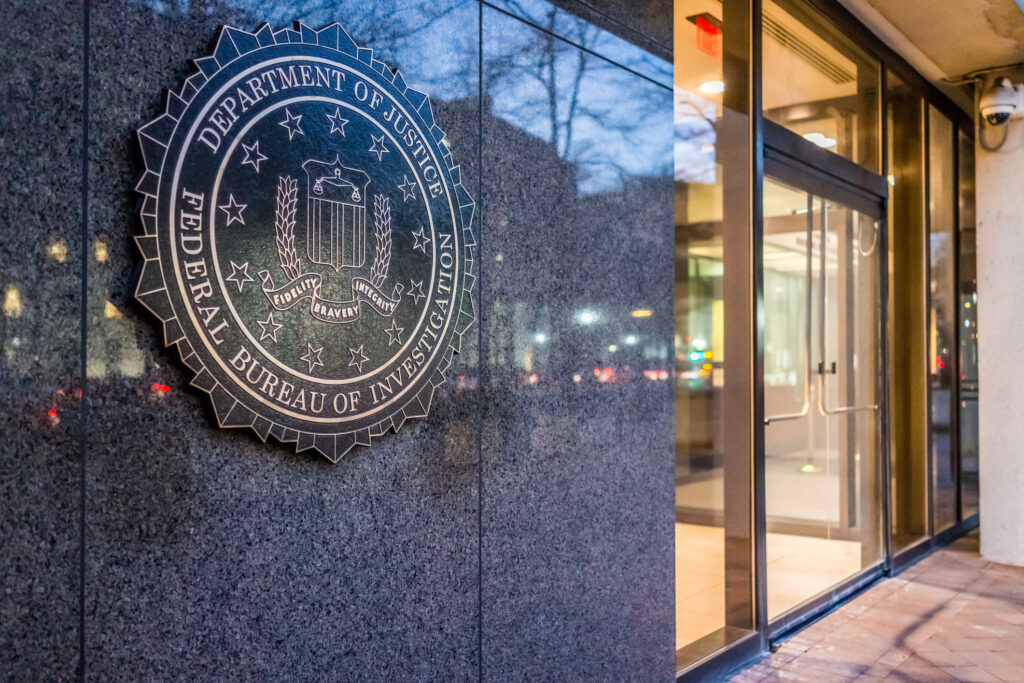Interior Secretary Ryan Zinke signed a Secretarial Order promoting transparency and accountability in consent decrees and settlement agreements, aimed at ending secret “sue and settle” deals with environmental activist plaintiffs.
Zinke’s September 11 order comes roughly one year after former Environmental Protection Agency (EPA) Administrator Scott Pruitt issued rules ending such agreements at EPA.
‘Significant Implications’
Order 3368 states DOI has for several years “supported entering a number of consent decrees and settlement agreements, including some with significant implications for the policies and priorities” of the agency.
From January 1, 2012 through January 19, 2017, Interior entered into more than 460 settlement agreements and consent decrees, resulting in the payment of more than $4.4 billion to plaintiffs, while keeping key provisions of these agreements secret, DOI reports. In President Barack Obama’s last year in office, Interior entered into 96 such agreements or decrees, costing taxpayers more than $1.7 billion.
Zinke’s order acknowledges decrees or settlements sometimes “may be a prudent use of taxpayer resources to avoid costly and drawn-out litigation” DOI is likely to lose. However, Zinke says in the order, “concerns have been raised” DOI has used the litigation process to undermine the procedural safeguards Congress put in place to ensure the public has input into policymaking.
Increasing Transparency
Order 3368 will alter DOI’s responses to lawsuits in several ways going forward.
The order requires DOI to file public notice of all litigation, proposed settlement agreements, and consent decrees in the Federal Register. Another provision provides a process for public input before Interior can approve a settlement with significant policy implications or large payouts.
Under the order, DOI will establish a publicly accessible “Litigation” webpage, prominently linked in the federal Office of the Solicitor’s homepage. Entries on this page must include the names of the parties involved in litigation, the case number, the date filed, the court where the complaint was filed, and the statutory or regulatory provisions at issue in the complaint.
By December 11, 2018, the Solicitor’s office must begin compiling, and the Chief Information Officer begin posting on the Litigation webpage, a searchable list of final judicial and administrative consent decrees and settlement agreements that govern DOI’s actions. Each summary must include a brief description of the decree or agreement, details of any attorney fees or costs paid, and a link to the text of the decree or agreement.
Also, within 15 days of receiving service of a complaint or petition for review of a law, regulation, or rule, the Solicitor must notify any state or tribe possibly affected by a complaint or petition that they are pending, except when the state or tribe is a party to the petition.
Secret Agreements ‘Not Fair’
The transparency reforms DOI is making should benefit states and the business community, says Joe Johnson, executive director of federal regulatory process review and analysis in the U.S. Chamber of Commerce’s Environment, Technology, and Regulatory Affairs Department.
“While the order creates new opportunities for affected businesses, the primary beneficiaries of this new transparency will be state governments,” said Johnson. “In the past, these settlement agreements and consent decrees short-circuited the public notice of proposed rulemaking.
“This was not fair, amounting to regulation behind closed doors with no opportunity for affected parties or the public to provide comments,” Johnson said. “This change in policy should be very effective, as now those who file suit are tasked with making the information on which they base their arguments publicly available.”
Johnson says parties potentially affected by a proposed settlement agreement should at least be made aware it is being considered.
“While sometimes it is not in the best interest of the department to contest an environmental lawsuit, we do not want Interior to fold just because a lawsuit is filed,” said Johnson. “Nor should affected parties be excluded from the negotiations or be blindsided with an order they had no idea was coming.”
Bringing Light to Darkness
People have a right to know what their government is up to, says Ellen Steen, general counsel for the American Farm Bureau Federation.
“[The Department of] Interior is shining light on a corner of government most people don’t even know exists,” said Steen. “Basic transparency demands citizens know what their government is doing.
“Faced with a barrage of allegations that saps agency time and resources whether they have merit or not, the government is too often motivated to capitulate through secret settlements, and in settling, agencies often agree to pay legal fees, which further fuels the sue and settle machine,” Steen said. “This action is a solid first step to fixing the problem. Every other federal agency should follow suit.”
EPA Set Example
EPA’s website now includes a page titled “Notices of Intent to Sue the U.S. Environmental Protection Agency,” providing details of nearly 300 notices of intent to sue, mostly from citizen groups plus a few from state and local government bodies, with a separate table listing about 380 active environmental cases, and a third table providing details of 15 finalized consent decrees and settlement agreements.
Many environmental statutes governing EPA’s actions include provisions allowing citizens to sue the agency when it allegedly fails to perform an act or duty required by law, the website explains.
With Zinke’s order on the books, DOI’s web page soon will also provide lists of notices of intent to sue, active cases, and completed consent decrees and settlement agreements.
Duggan Flanakin ([email protected]) writes from Austin, Texas.




